Bridge Roadway Safety for Agricultural Vehicles:
Understanding Bridge Weight Limits
Printable Version [PDF, 2.7 MB]
You may need the Adobe® Reader® to view the PDFs on this page.
Contact Information: Freight Feedback at FreightFeedback@dot.gov

U.S. Department of Transportation
Federal Highway Administration
Office of Operations
1200 New Jersey Avenue, SE
Washington, DC 20590
FHWA-HOP-16-068
December 2016



Transportation agencies rely on driver compliance to preserve
and protect the Nation’s 60,000 weight-restricted bridges.
Crossing a bridge in a vehicle that exceeds the weight limit
can damage both the bridge and your vehicle, meaning you or other bridge users may not be able to cross safely. If your vehicle damages a bridge, you may be held liable for the
cost of repair.
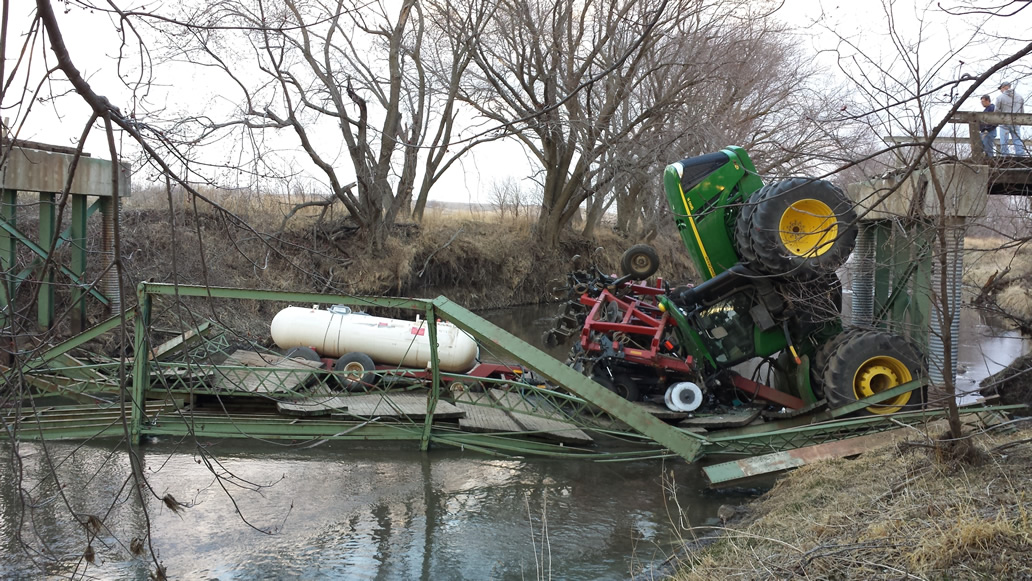
Preserve Bridges,
Prevent Liability.
Not all bridges were designed to carry today’s maximum legal
weight vehicles, including modern agricultural equipment. Also, some bridges have deteriorated over time, which reduces their load carrying capacity. Pursuant to the National Bridge Inspection Standards, bridges that cannot safely support all legal vehicles must be weight restricted. Through bridge weight limit signs, the traveling public receives notice of the maximum vehicle weight a specific bridge can safely support. The signs also help extend bridge service life by preventing damage and potential failures.

Many States have laws that allow larger
agricultural equipment to operate on their roadways, but not all of the bridges on these roadways were designed to support such loads. A weight-restricted bridge cannot safely support the weight of any vehicles that exceed the posted weight limit even if they are otherwise legal on the adjacent roadways.
Know your vehicle and load, understand load posting signs, and obey the weight limits.
- It is your responsibility to know the weight and configuration of your vehicle and load.
- If you do not know the weight of your vehicle and attached
trailers, contact the vehicle manufacturer or check the
weight at a local certified scale facility. Check gross load and
maximum axle weight for both the empty weight and the
weight at maximum capacity.
- In some States, the actual weight may not exceed the
declared gross weight on the vehicle registration.
- Check with your State transportation agency to understand all applicable laws for your vehicles.
- It is your responsibility to understand and obey load
posting signs.
- Do NOT exceed the posted weight limit on any bridge.
- Bridge weight restriction signs vary between States and
localities. If you do not understand the signs in your area,
contact the owner, which may be the local or
State transportation agency.
- What if my vehicle and load exceed posted capacities? Do not cross the bridge! Instead:
- Take an alternate route that can legally and safely carry
your vehicles, or
- Reduce your load and make multiple trips, or
- Contact your local or State transportation agency to see
if accommodations can be made to the bridge to allow
you to cross safely.
- What are the consequences of violating a bridge weight
limit sign?
- Subjecting a bridge to vehicles that are heavier than the
structure is able to carry safely can cause damage both
visible and hidden, which could lead to closure or failure of
the bridge.
- You may be cited with a traffic violation for not obeying
a regulatory sign.
- You may be held liable for damages if you violate the
load posting.
Weight limit signs carrying the legend
WEIGHT LIMIT XX TONS are used to
indicate the maximum gross vehicle weight
(including equipment being towed by the
vehicle) that can safely cross the bridge.
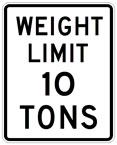
Examples of other
load posting signs.

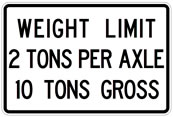
An axle weight limit sign applies to axle
weight rather than gross load. The sign
may read AXLE WEIGHT LIMIT XX TONS or
AXLE WEIGHT LIMIT XX LBS, indicating the
maximum safe axle load of your vehicle and
any equipment it is towing.
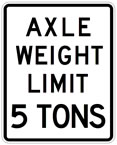
The allowable Federal weight limit applies to bridges on the Interstate System and within reasonable access to it. On other roads, limits may be higher or lower as determined by State or local laws.
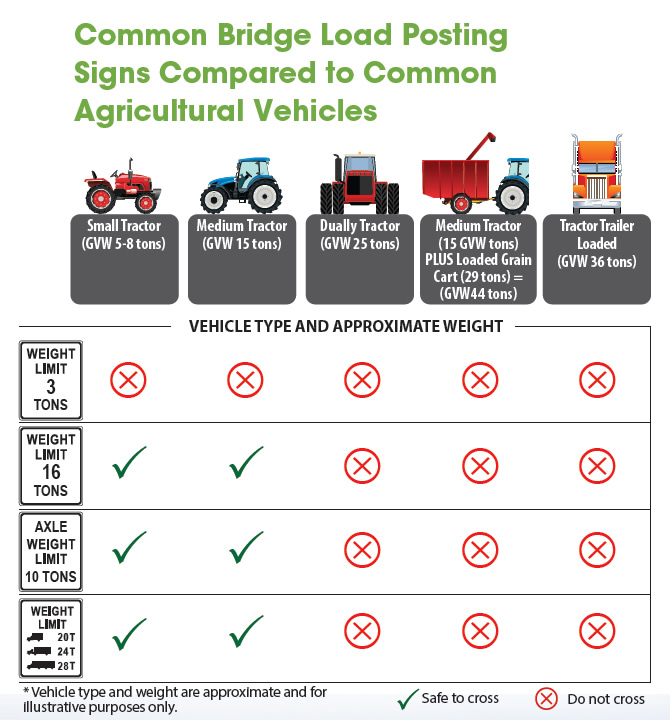
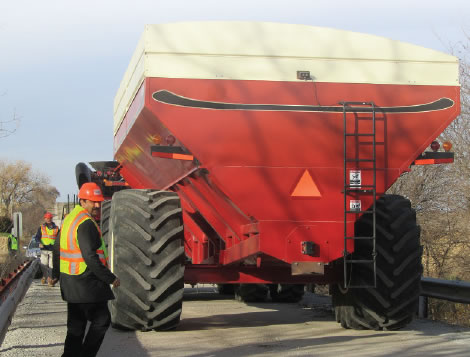
Where can I get more information?
- Your local or State transportation agency.
- State oversize/overweight permitting offices. For a list of contacts
for each State visit: https://ops.fhwa.dot.gov/freight/sw/permit_report/index.htm.
- State and locality specific websites for load posted bridges. For example: https://idrivearkansas.com/?show=weight_restricted_hwys.
- Your agricultural vehicle manufacturer.
- FHWA’s "Bridge Formula Weights" brochure. http://ops.fhwa.dot.gov/freight/publications/brdg_frm_wghts/bridge_formula_all_rev.pdf.
- FHWA’s Federal Size Regulations for Commercial Motor
Vehicles guide. https://ops.fhwa.dot.gov/freight/publications/size_regs_final_rpt/size_regs_final_rpt.pdf.
- Wisconsin DOT Implements of Husbandry (IoH) Study Group. http://wisconsindot.gov/Pages/dmv/agri-eq-veh/study.aspx.
For More Information:
U.S. Department of Transportation
Federal Highway Administration
Office of Operations
1200 New Jersey Avenue, SE
Washington, DC 20590
Toll-Free "Help Line" 866-367-7487
www.ops.fhwa.dot.gov